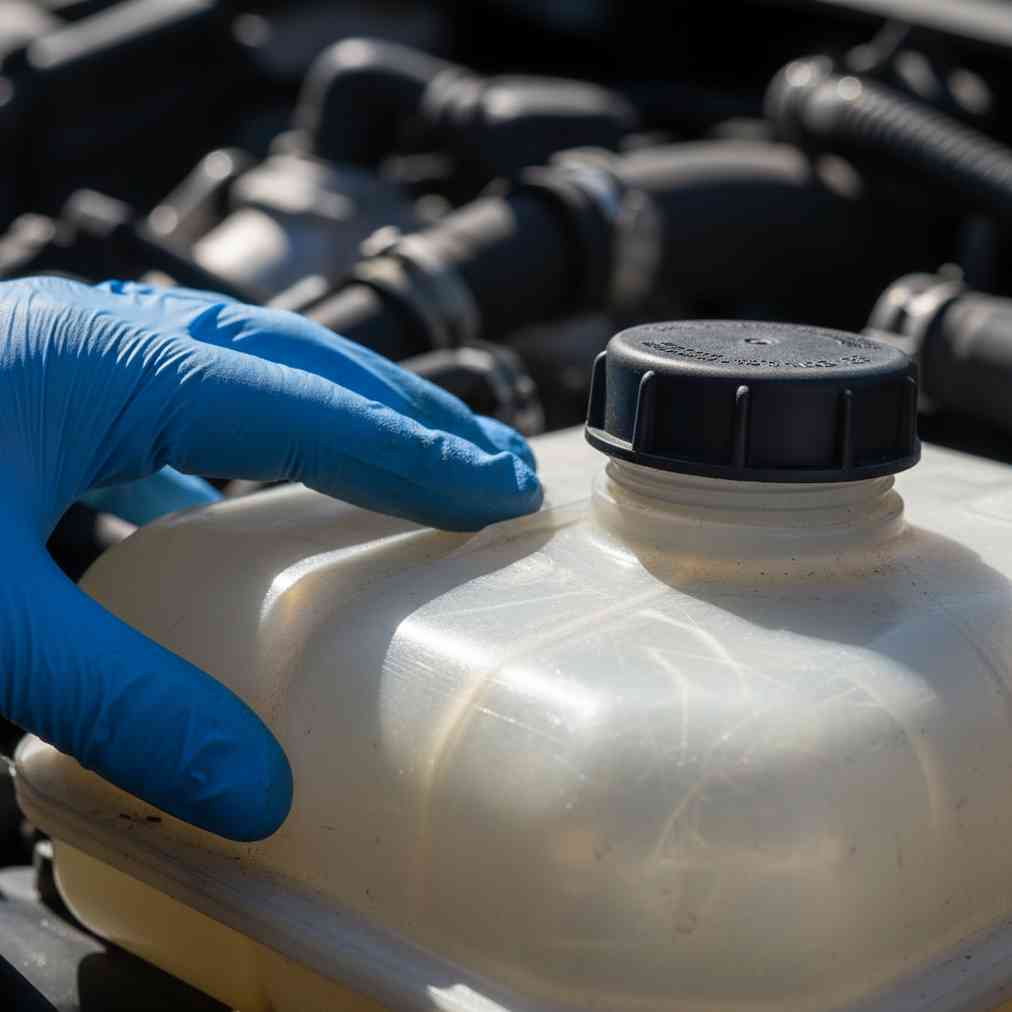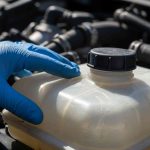Understanding the Critical Role of Your Vehicle’s Coolant Tank
Your vehicle’s cooling system is a complex network of parts working together to prevent engine overheating, and at the heart of this system lies a often-overlooked component: the coolant expansion tank. Also known as the overflow tank or reservoir, this translucent plastic container plays multiple vital roles in maintaining your engine’s optimal operating temperature.
When functioning properly, the coolant tank serves as a storage and expansion buffer for your engine’s coolant. As your engine heats up during operation, the coolant expands and flows into this reservoir, preventing the entire pressurized system from over-pressurizing. When the engine cools down, the coolant contracts, creating a vacuum that draws the stored fluid back into the radiator, ensuring it remains adequately filled for the next heating cycle.
The Five Essential Functions of a Coolant Tank
- Coolant Storage and Expansion Buffer: Stores excess coolant as it expands during engine heating cycles
- Coolant Recovery: Returns stored coolant to the radiator as temperatures drop
- Pressure Regulation: Works with the radiator cap to manage system pressure effectively
- Air Prevention: Prevents air from entering the cooling system during expansion and contraction cycles
- Visual Level Indicator: Provides easy monitoring of coolant levels without opening the pressurized system
Why Even Minor Damage Spells Major Trouble
Understanding why even a hairline crack in your coolant tank can lead to serious engine problems is crucial for vehicle maintenance. The cooling system operates under specific pressure conditions to raise the boiling point of the coolant, allowing it to absorb more heat from your engine.
When a crack develops, several cascading problems occur simultaneously. First, coolant loss begins immediately as the pressurized fluid escapes through the breach. Since coolant is responsible for absorbing and transferring engine heat, any reduction in volume directly compromises the system’s ability to regulate temperature.
Second, the system loses its critical pressure seal. This pressure loss causes the coolant to boil at lower temperatures, leading to overheating even when coolant levels appear adequate. Finally, the leak allows air to enter the system during cooling cycles, and since air transfers heat poorly compared to liquid coolant, this creates localized hot spots that can cause severe engine damage.
The Smart Buyer’s 3-Step Inspection Process
When sourcing a replacement coolant tank from a junkyard near you, thorough inspection becomes critical. The plastic material used in these tanks is particularly susceptible to degradation from heat cycling and age, making a systematic evaluation essential for ensuring your investment pays off.
| Step | Inspection Focus | What to Look For |
|---|---|---|
| 1 | Check for Hairline Cracks | Visually inspect the entire plastic body, paying special attention to stress points like hose connections and mounting tabs. These areas experience the most vibration and thermal expansion stress. |
| 2 | Assess Plastic Condition | Look for signs of age and brittleness including yellowing, chalky appearance, or brittle texture. Gently squeeze the tank if safe to do so. |
| 3 | Verify Cap and Sensor Integrity | Ensure the pressure cap is present with intact seals, and check that any coolant level sensors show no damage or corrosion. |
Step 1: Crack Detection – Your First Line of Defense
Begin your inspection by examining every inch of the tank’s surface under good lighting. Hairline cracks are often nearly invisible but can render the entire part useless. Pay particular attention to high-stress areas where the tank connects to hoses or mounting brackets.
Common failure points include the neck where the radiator hose connects, mounting tab areas where vibration stress concentrates, and any areas showing discoloration or wear patterns. Even microscopic cracks will expand under the thermal cycling your cooling system experiences, making this the most critical inspection step.
Step 2: Material Condition Assessment
Plastic degradation occurs gradually through repeated heating and cooling cycles. A tank that appears intact may still be compromised if the material has become brittle. Visual indicators of degradation include:
- Yellowing or discoloration from the original color
- Chalky or dull surface finish
- Visible stress marks or crazing
- Brittle feel when gently flexed
According to recent automotive data science trends, analyzing material degradation patterns has become increasingly sophisticated, helping both salvage yards and consumers make better decisions about part viability.
Step 3: Critical System Components
The final inspection step focuses on the tank’s integrated systems. The pressure cap must be present and functional, as it’s crucial for maintaining system pressurization. Examine the cap’s rubber seal for cracks, hardening, or deformation that could prevent proper sealing.
If your vehicle uses a coolant level sensor, verify that both the sensor and its electrical connector are intact. Corrosion on electrical contacts or damage to sensor housing can trigger false warning lights or prevent proper system monitoring.
Professional Tips for Smart Shoppers
Industry experts consistently recommend replacement over repair for cracked coolant tanks. While small cracks can sometimes be temporarily patched with epoxy, this approach rarely provides a long-term solution and can lead to costly engine damage if the repair fails.
“When evaluating used cooling system parts, focus on structural integrity above all else. A tank that passes Steps 1 and 2 of our inspection process will typically provide reliable service, while one showing cracks or brittleness should be avoided regardless of price.”
For those looking to sell a junk car with cooling system issues, remember that even vehicles with overheating problems retain significant value for their usable parts and scrap metal content.
Making Your Investment Count
A quality used coolant tank can provide years of reliable service when properly selected and installed. The three-step inspection process outlined here takes only minutes to complete but can save you from the frustration and expense of premature part failure.
Remember that cooling system integrity affects every aspect of your engine’s performance and longevity. By taking the time to properly evaluate used cooling system parts, you’re making an investment in your vehicle’s long-term reliability while avoiding the premium cost of new OEM parts.
Modern research methodologies, similar to those used in automotive data science, have helped identify the key failure patterns that make this inspection process so effective. By following these proven steps, you’ll join the ranks of smart automotive enthusiasts who know how to find quality used parts that deliver lasting value.





Leave a Reply
You must be logged in to post a comment.